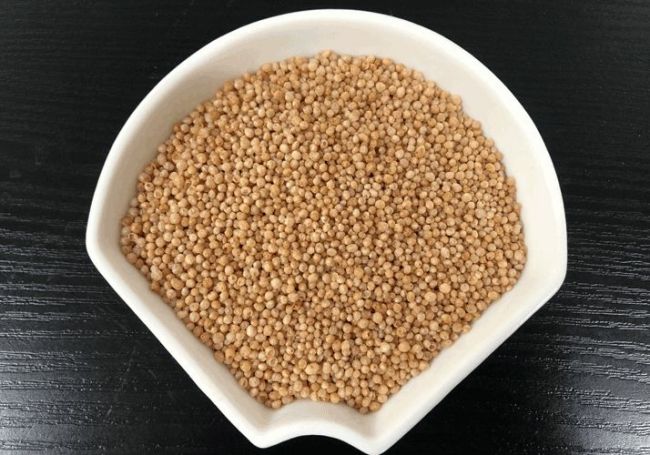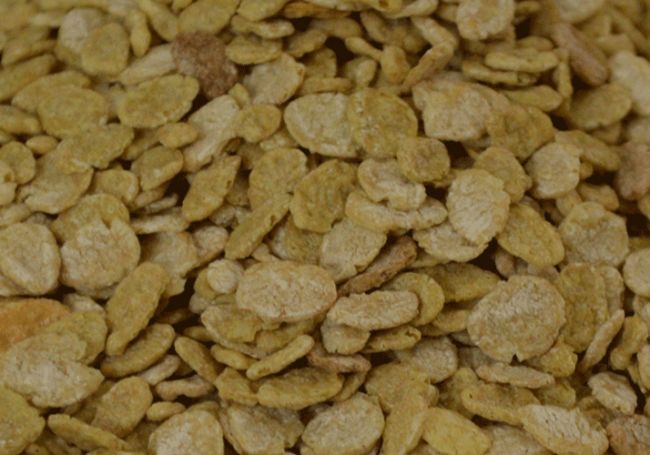Buckwheat is a fast-growing plant and features elongated, heart-shaped leaves and clusters of long-lasting white, pink, or red flowers—attractive enough to grow among your ornamentals. To enrich garden soil, buckwheat can be grown as a cover crop that overpowers weeds or as green manure. It can also be interplanted between rows. Among its many benefits, buckwheat protects soil that would otherwise be bare, replenishing it after an early spring crop as well as preparing it for planting other crops in the future.
To grow buckwheat, you will need a fairly large plot. However, even a small area is excellent for distracting unwanted pests away from other crops and attracting pollinators. In addition to pleasing the bees, some larger wild birds like quail and pheasant may enjoy the seeds as well. Consider planting buckwheat if you want to smother weeds, attract beneficial bugs and trap pests, break up topsoil, produce gluten-free flour and hot breakfast cereal, and even—if you have a large quantity available—create a bright pink tourist attraction to rival lavender or tulip fields. Green Tea Powder

Timing is important when planting buckwheat, as it will outgrow and crowd out weeds if given a chance.
Plant buckwheat after the last frost so it will thrive throughout the spring and summer. If your goal is to harvest the seeds, note that buckwheat seed germinates best when the soil temperature is about 80 F; however, they can germinate at any temperature between 45 F and 105 F. If you don't want volunteers to pop up later, clear the buckwheat once the flowers die.
Plant in a clean, loosened bed of neutral to acidic soil that has been thoroughly watered ahead of time. Scatter the seeds at a rate of one pound per 500 square feet of garden space, then rake them in and water again. To plant small patches of seeds around your ornamental garden, plant roughly half an inch deep and three to four inches apart.
Common buckwheat plants are generally not sold as starts because for soil remediation, pollinator or trap benefits, or harvesting the seeds, you will need a fairly large number of plants. Also, growing seedlings in pots for transplant is not recommended, as individual buckwheat plants have tender, upright stems and would be likely to break in the process of transplanting.
Buckwheat’s season is relatively short, and because it has few pest and disease issues, it is very easy to grow organically.
Buckwheat needs full sun and cannot thrive in full shade. However, even though it’s a warm-weather crop, too much hot sun can make it wilt—a self-defense mechanism to avoid too much transpiration—and cause the flowers to blast or stop making seeds.
Buckwheat is very adaptable and can thrive in poor soils. If the soil too poor to support buckwheat on its own, some balanced fertilizer will help. Adding mulch to the plants and back into the soil will readily return the nutrients it has pulled up, and more fertilizer won’t be necessary. Leave the spent plants on the surface of the soil, and they will break down slowly. These plants tend to break down too quickly to be good for erosion control.
Buckwheat offers a shallow root system and requires soil that holds moisture well, but regular watering makes a notable difference when plants are flowering or producing seeds. Too much water during this phase, however, can affect the weight and moisture retention of the seeds.
Buckwheat tends to be grown in cooler and more northern locations, but it can grow in zones 3 to 10, as its growth cycle is relatively short. It is sometimes touted as drought-tolerant, though, again, watch out for wilting if it becomes too hot or dry.
While types of buckwheat do not vary greatly from each other, they do have some distinctions. One commonality, though, is that most varieties are not hybrids, despite the bulk commercial use, so you can save seeds for replanting next season.
The varietal most often grown commercially, common buckwheat has white flowers that produce smaller kernels and is mainly used for flour and cover crops. This is the type most likely to be sold in a local garden supply store.
Considered a dominant variety in the 1900s, Manor is another widely used commodity crop that has larger kernels and is mainly used for groats.
A semi-wild plant with loose clusters of small white flowers and angular leaves, Tartary buckwheat has a bitter taste and a dark hull. It is known for its high flavonoid content in both the leaves and seeds and its unusual amount of selenium.
Buckwheat was originally introduced to Japan as a trap crop, but is now used in soba noodles, cakes, and other baked goods. Dozens of varieties of buckwheat are bred for harvest at different times of the year. Tokyo buckwheat, in particular, was developed in Canada from a Japanese strain and has small but heavier kernels. Moreover, pink and red varieties of buckwheat were brought from the Himalayas and Yunnan, China, to Shinshu University where they were adapted for the Japanese climate and market.
Larger growers use a combine to harvest buckwheat, but if you don’t happen to have such a thing, you can cut the stalks with a scythe, tie up bundles, and let them dry. Then shake them into a container, much like wheat or oats. Store away from heat, light, and humidity, as you would with other grains. Groats, with their hard hull, will last longer than milled flour and can also be frozen. How long the seeds last depends on the variety, since their moisture retention varies significantly.
Buckwheat reaches its flowering and seeding stage in 70-90 days. Its quick growth makes it a strong spring crop.
Buckwheat is an annual plant that can easily reseed itself if your goal is to create a pollinator garden rather than a grain harvest. If you don't want buckwheat to grow in the same spot again, turn it under before seed mature.
Deer, cows, rabbits, goats, and other animals particularly enjoy buckwheat. To protect your crops, keep an eye out and put up a strong fence.
Nardozzi, Charlie. “Fall Garden Cover Crops.” The National Gardening Association.
“Where to Grow Buckwheat.” Cornell University.
“Buckwheat Makes a Good Summer Cover Crop for Gardens.” Oregon State University.
Jacquemart, Anne-Laure, et al. “Is Buckwheat (Fagopyrum Esculentum Moench) Still a Valuable Crop Today?.” The European Journal of Plant Science and Biotechnology, vol. 6, no. Special issue 2, 2012, pp. 1-10.
Ohsawa, Ryo. “Current Status and Prospects of Common Buckwheat Breeding in Japan.” Breed Sci, vol. 70, 2020, pp. 3-12.,doi:10.1270/jsbbs.19108

Buckwheat Hull Powder Sign up for our newsletter